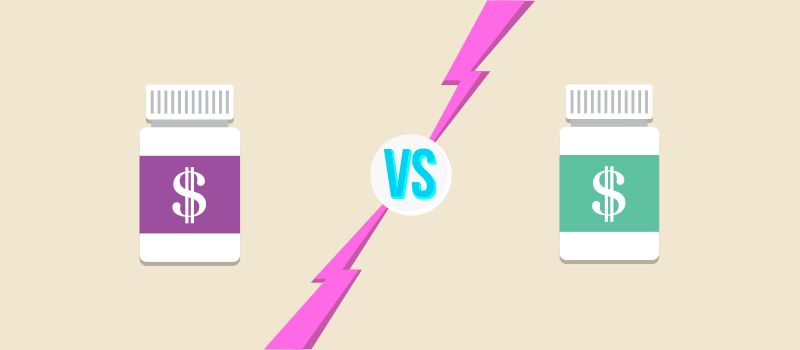What’s the Buzz
The Bee Healthy Blog
What is a Deductible? A Health Care Guide

Understanding the terms used in your health insurance plan and the out-of-pocket costs involved is necessary to help you plan and manage your health care expenses. One of the terms you will hear is deductibles. Please keep reading to learn more about how health insurance deductibles work and what they mean for your health coverage.
What is the difference between a healthcare premium and deductible?
A health insurance premium is the upfront cost you pay to keep your health plan active. If you have purchased your plan from the Marketplace, you will pay a monthly premium to keep your health coverage. If your health insurance is through your employer, they will deduct the monthly premium from your paycheck.
A health insurance deductible is a set amount you must pay towards your healthcare each year before the insurance company starts paying for your healthcare. Therefore, a deductible is the cost-sharing between you and the insurance provider. Once you have paid the deductible, you only pay the copayment or coinsurance towards covered services, and the insurance company pays the rest. The average deductible for individuals in 2021 was $2,825.
How does a higher versus lower deductible compare?
If your health insurance plan has a low deductible of $500, you will pay the first $500 towards covered services in a given year. After you have met this deductible, you will be responsible for the copay or coinsurance payments, and your health plan will pay the rest.
In contrast, if your health insurance plan has a high deductible of $4,000, the first $4,000 towards covered services in a plan year will be out-of-pocket expenses. The health plan begins contributing towards health care costs only after you have met this high deductible.
The only exception to the above is preventive care, which is 100% covered by most health insurance plans if you stay in-network. This means your health plan will pay for annual physicals, flu shots, and certain other tests and screenings that are considered preventive care or routine care, even if you haven’t met your deductible.
Are health insurance deductibles a good thing?
As a general rule, the higher the health insurance deductible, the lower the monthly premium. High-deductible health plans (HDHPs) have some of the lowest monthly premiums. There are pros and cons to getting a high-deductible plan.
Advantages of a high deductible health plan
- Lower monthly premium.
- Tax-free Health Savings Account (HSA): Some high deductible health plans are paired with an HSA where you can deposit money tax-free and use it for eligible medical expenses.
Disadvantages of a high deductible health plan
- High deductible: You will have to pay out-of-pocket for all your non-preventive medical care until you meet the high deductible.
Do family members on the same plan have separate deductibles?
Different health insurances have different rules. A family coverage health plan can have an overall family deductible, individual deductibles for each family member, or both. In the former, if the deductibles for any combination of family members meet the family-deductible maximum, then the plan’s deductible is considered satisfied for the whole family. In the latter, each family member must meet the individual deductible with an out-of-pocket cost before the health insurance plan kicks in.
Is high deductible health insurance right for me?
Choosing the right health insurance can be confusing, i.e., high deductible health plans versus traditional low deductible plans.
It’s a good idea to consider your anticipated health care costs. If you or a family member have chronic medical conditions and need to see a primary care provider and specialists several times a year, then plans with lower deductibles may be the better choice. In this case, your monthly expenses on premiums will be higher, but the deductible amount will be low before the health plan kicks in and starts paying for healthcare services. This will help keep overall health costs in check. Nonetheless, if you are considering a low premium plan and higher deductibles, compare costs and check whether the savings you will make from the lower premium will be more than what you would pay for out-of-pocket medical expenses before meeting the deductible.
On the other hand, if you are generally healthy and do not anticipate any health care besides preventive care, a high deductible health plan may be the more cost-effective option for health insurance coverage. However, keep in mind that should you need costly health care services such as emergency room care, the health insurance company will only pay after you have met the high annual deductible. This could result in significant unanticipated out-of-pocket healthcare expenses.
Does a health insurance deductible cover everything?
A health insurance deductible covers all eligible medical expenses. Once you have paid the deductible, your health plan kicks in, and you only have to pay the coinsurance or copayment for covered health care services. The exception is certain preventive care services, which are 100% covered under most health plans if you stay in-network. In other words, your health insurance policy will most likely pay for preventive healthcare costs even if you have not yet met your deductible.
What medical expenses go towards your deductible?
All out-of-pocket spends on necessary covered medical expenses count toward your deductible. Remember that these medical costs and benefits should be covered under your health plan. Also, you should follow all the rules regarding referrals, using in-network providers, and obtaining pre-authorization for the health care expenses to count towards individual and family deductibles.
What is out of pocket maximum?
Out-of-pocket maximum is the maximum medical costs you pay out-of-pocket in a plan year. Once you meet this limit, the insurance company pays for 100% of the covered benefits.
For the 2023 plan year, a plan purchased from the marketplace cannot have an out-of-pocket maximum of more than $9,100 for an individual or $18,200 for a family.
The out-of-pocket maximum typically includes your deductible, coinsurance, and copays. However, it does not include the following health care costs:
- Monthly premiums.
- Medical services that are not covered by your health plan.
- Out-of-network health care costs.
- Any medical costs above the eligible amount that a provider charges.
References:












SOCIAL